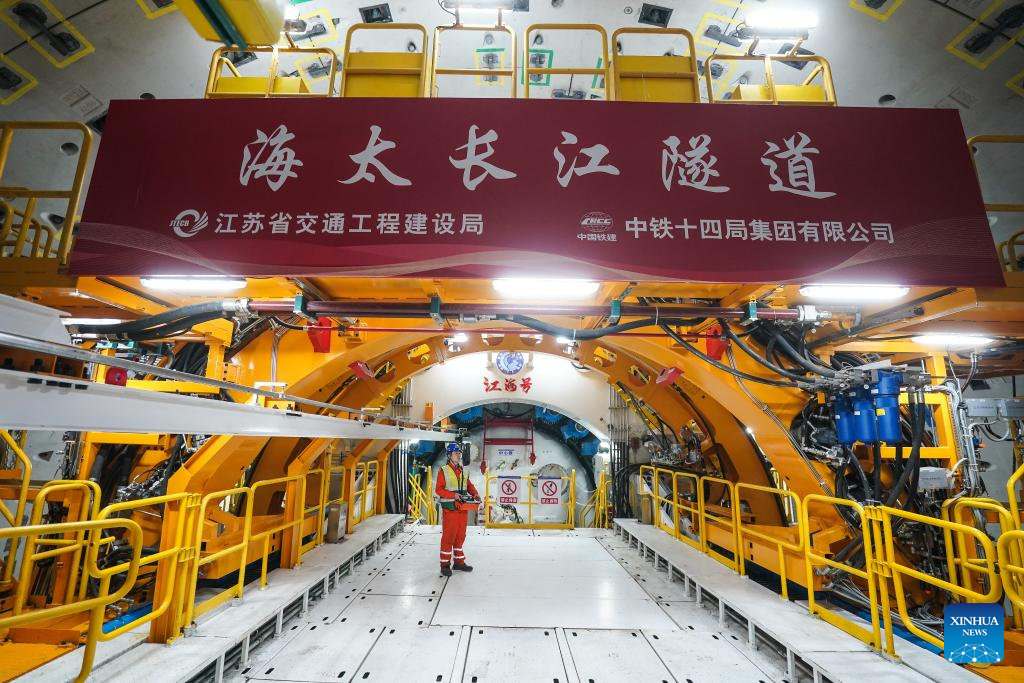China launches giant tunnel boring machine for Yangtze River project


NANJING -- China on Wednesday deployed a giant self-developed tunnel boring machine (TBM) for the construction of the world's longest underwater highway TBM tunnel.
The new machine, named "Jianghai," has a maximum excavation diameter of 16.6 meters. It is approximately 145 meters long and weighs an impressive 5,000 tonnes.
The machine is used in the construction of the Haitai Yangtze River Tunnel in East China's Jiangsu province. The tunnel is a key project to forge a major trans-river road link under China's longest river, connecting Haimen in the city of Nantong with Taicang in the city of Suzhou.
Stretching approximately 39.07 kilometers in total, the tunnel includes an 11.185-kilometer underwater section, with 9,315 meters to be excavated using a TBM. It is designed as a six-lane, bidirectional highway with a speed limit of 100 km/h.
Navigating through complex geological formations beneath the riverbed, including layers of silt and fine sand, the tunnel will reach a maximum depth of 75 meters, subjecting it to immense pressure which is equivalent to 75 tonnes per square meter, according to You Shaoqiang, chief engineer of the tunnel project of China Railway 14th Bureau.
"These harsh conditions make the construction process extremely challenging," he said.
To tackle such difficult construction conditions, the "Jianghai" shield machine is equipped with innovative technologies, including a pressure-balanced cutterhead and an intelligent monitoring system that enables real-time monitoring of cutterhead wear and facilitates tool repair or replacement within the underwater working cabin. It also features dual slurry injection to improve efficiency, said Meng Defeng, TBM manager for the project.
For safety during operational phase, the project team has devised a segmented smoke extraction system to mitigate fire risks. They have also incorporated a dedicated rescue vehicle access tunnel, which is connected to the main tunnel via corridors, to facilitate swift rescue operations without disrupting other traffic within the tunnel.
"The tunnel boasts multiple pioneering features in structural design, disaster prevention, equipment, green technology, and intelligent systems, with its construction designed to be close to carbon neutral," said Chen Junwei, a manager of the tunnel project.
The tunnel is expected to be completed in 2028. Upon completion, it will serve as a critical link to facilitate transportation in the Yangtze River Delta.
"This project will play a pivotal role in promoting regional integration within the Yangtze River Delta and inject significant momentum into the high-quality development of the world-class Yangtze River Delta city cluster," You said.
- Astronomers' dark energy breakthrough sheds new light on cosmic accelerated expansion
- China-led telescope project secures global partners for cutting-edge cosmic research
- Beijing on high alert for extreme winds
- Registration rules eased to encourage marriages
- Drier lunar far side offers insight on moon's evolution
- State Council watching over probe of deadly fire




































